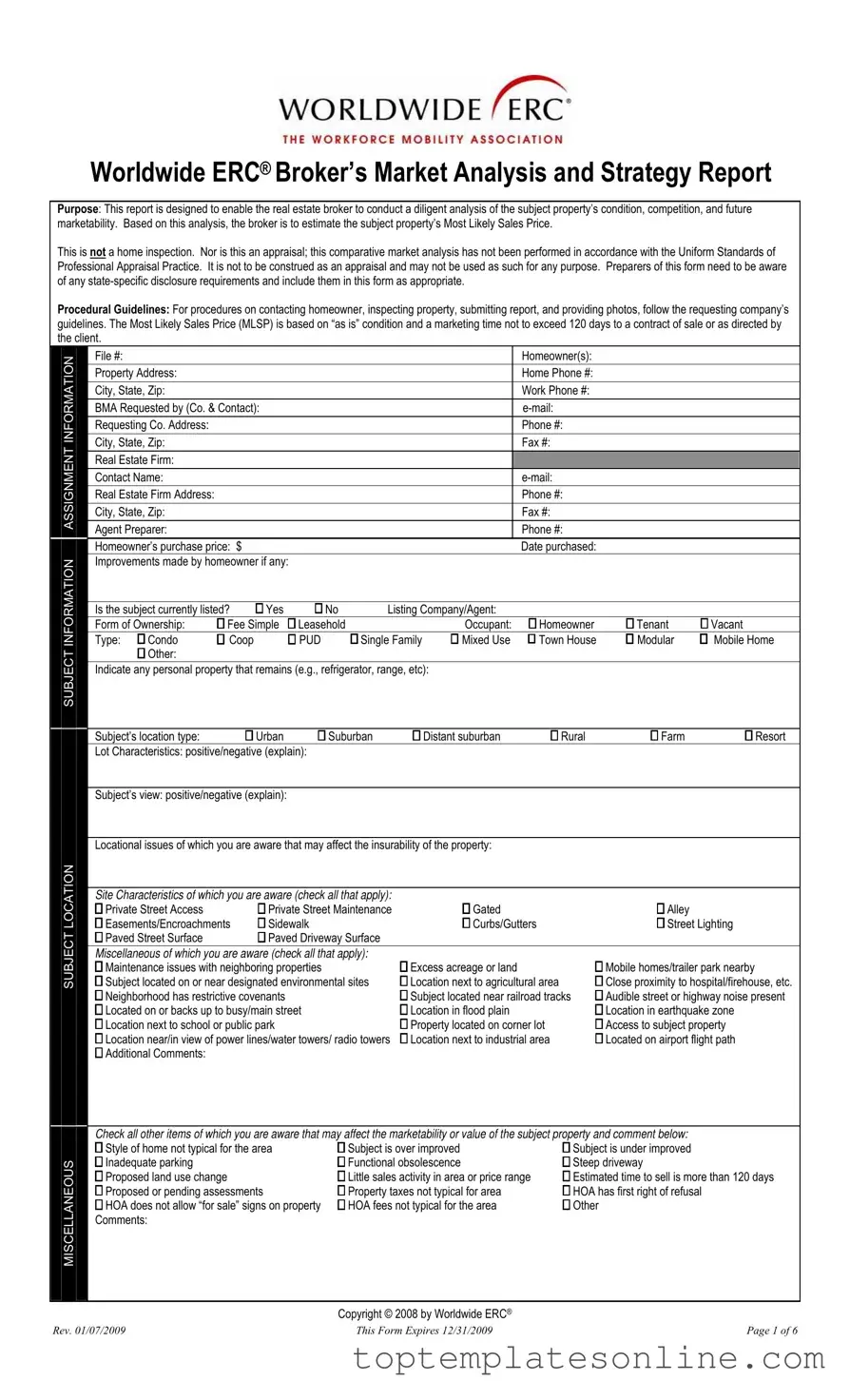The Worldwide ERC® Broker’s Market Analysis and Strategy Report serves as a critical tool for real estate brokers tasked with evaluating a property's market position. This comprehensive form guides brokers in assessing the condition of the subject property, its competitive landscape, and its potential for future marketability. Through a detailed analysis, brokers estimate the Most Likely Sales Price (MLSP) based on the property's current state and anticipated marketing time, which should not exceed 120 days unless otherwise directed by the client. It is essential to note that this report is distinct from a home inspection or an appraisal, as it does not adhere to the Uniform Standards of Professional Appraisal Practice. Brokers must also consider any state-specific disclosure requirements, ensuring compliance while filling out the form. The report includes sections for gathering vital information about the property, such as its location, type, ownership, and any improvements made by the homeowner. Additionally, it prompts brokers to document the property’s condition, necessary repairs, and any locational issues that may impact insurability. By systematically gathering this information, brokers can provide a more accurate and informed market analysis, ultimately benefiting homeowners and potential buyers alike.
